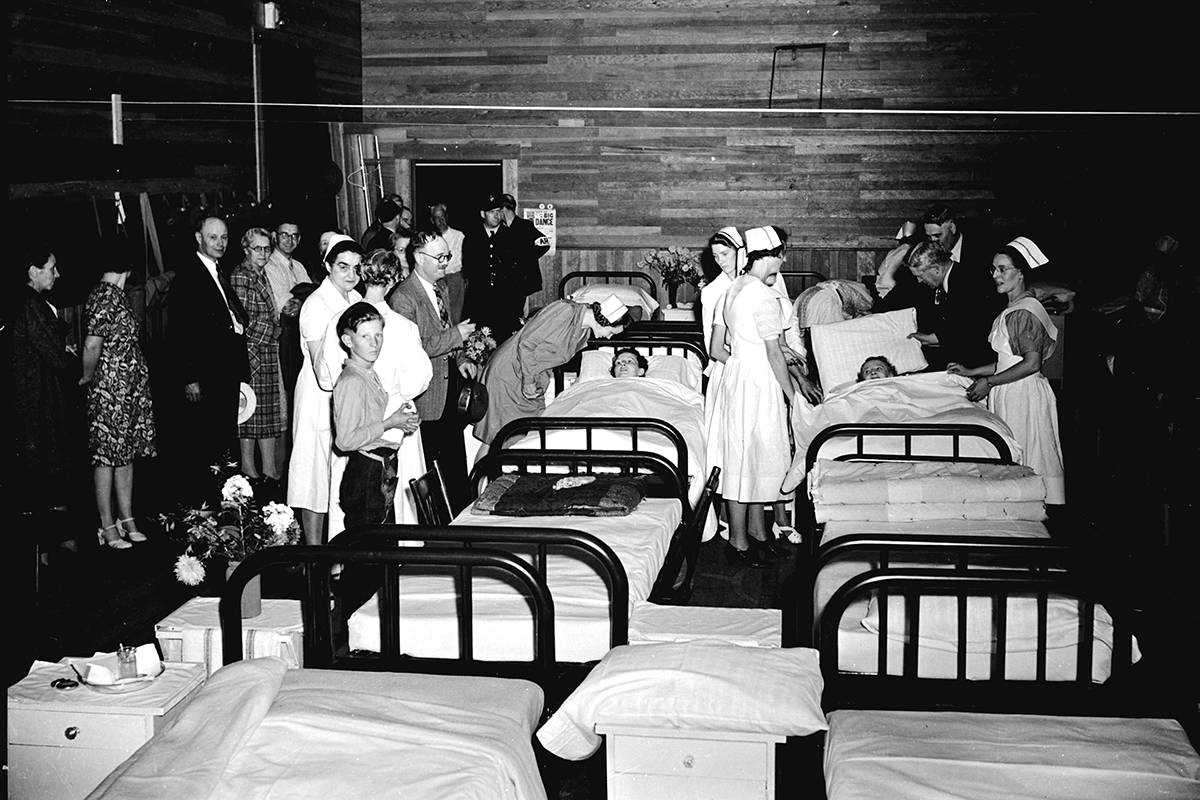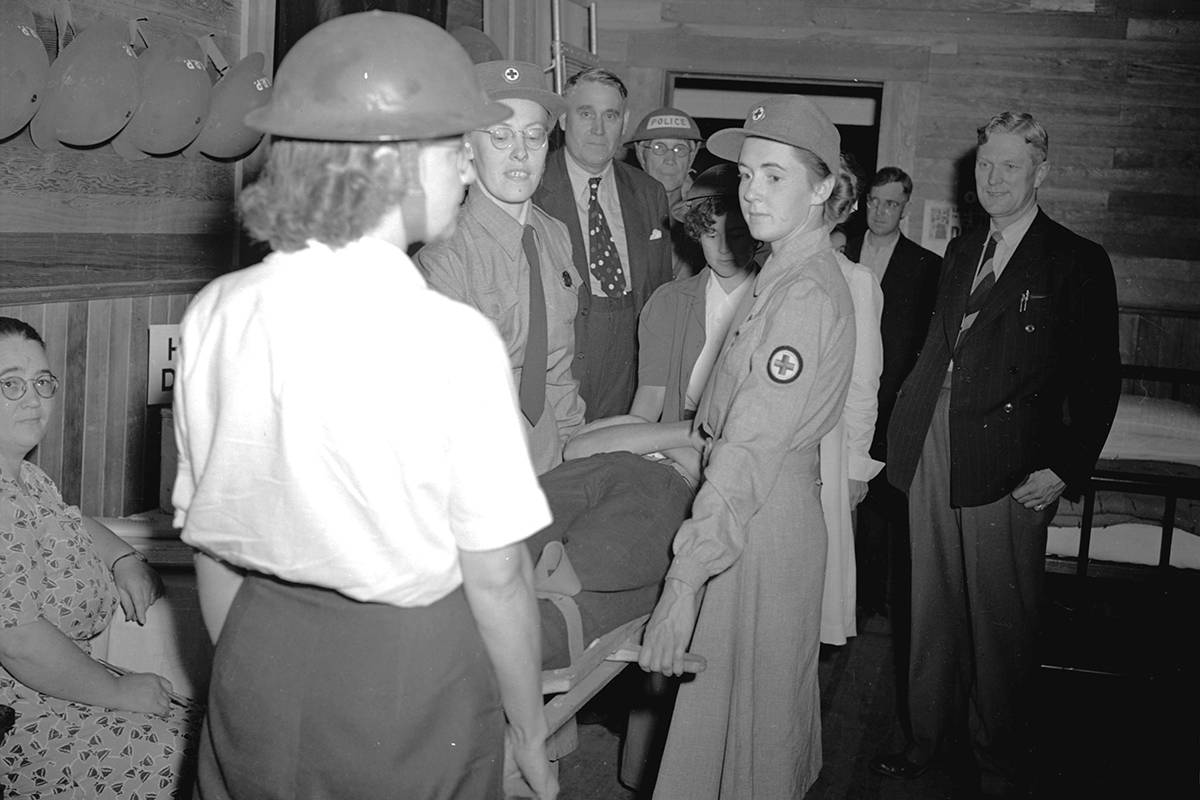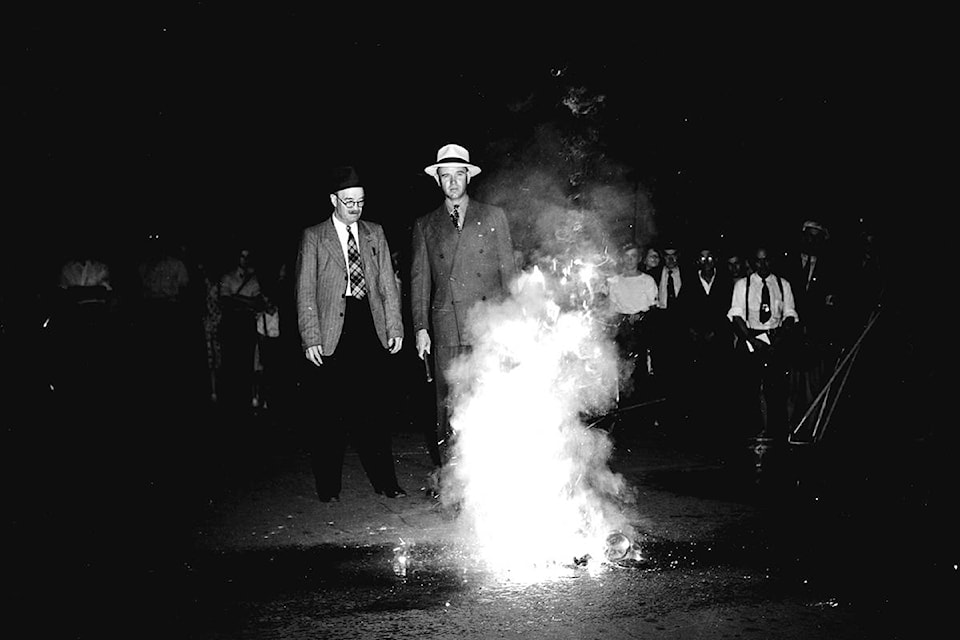By Sue Bryant,
Cloverdale Reporter
Times were volatile and difficult as 1941 arrived in Surrey. Canada had been at war for two years and many young men and women had taken up the call to defend their country.
In January of 1941, the attorney general announced the expansion of the Civil Defence Guild and the expansion of the Air Raid Precautions (ARP) League. Citizens were asked to volunteer to organize for the internal security of their community.
By 1942, more than 3,000 citizens in the Lower Mainland had volunteered to assist the Civil Defence Guild. In Surrey, First World War veteran George Arthur Hooser was named as the chairman. Although he had been severely injured in Ypres, he recovered sufficiently to return home with a strong will to make a difference in his community.
- HISTORY: Dark days of Second World War challenged Cloverdale’s Christmas spirit
- HISTORY: December of 1917 a time of social change in Surrey
Emergency hospitals had begun to develop in different areas of the Lower Mainland to take on potential casualties in the event of air raids. In New Westminster, Dontenwill Hall – now known as Pacific Hall on Agnes Street — had set up a 300-bed unit and made preparations to use the stage as a makeshift operating theatre. Ladner had set up a small emergency hospital, as had Langley and Maple Ridge.
With a population of 18,000 in Surrey, it was becoming evident that it was time for an emergency hospital to be organized locally. At the time, if a medical emergency occurred, the closest hospital was Royal Columbian or St. Mary’s Hospital in New Westminster.
Cloverdale was quickly chosen as the best location, as it was the most central area to all of the town centres in the municipality.
Very quickly, the word went out that it was time to fundraise for the emergency hospital. Newspapers were full of advertising for events to benefit the Surrey Emergency Hospital. There were whist and crib parties, community dances, and even a well-publicized barn dance held at a private residence that brought in trainloads of Vancouverites in their boots and cowboy hats to enjoy the country atmosphere.
On May 29, 1942, the hospital committee held its first meeting and the location was chosen as the Cloverdale United Church hall on 176 Street. George Hooser appointed Gloria Bingham as President, Stan McKinnon as Secretary-Treasurer and Anna Heppell as the hospital superintendent. Dorice Dann, whose husband Ernest Dann ran Dann’s Electronics in town, was appointed as the fundraiser.
| The Cloverdale Emergency Hospital. City of Vancouver Archives / CVA 586-2176 / Don Coltman, Steffens Colmer-Studios Ltd. |
With blackouts occurring nightly and rations reducing the amount of supplies available, fundraising had many challenges. However, a small town attitude and a will of the community ensured this could be overcome. Fundraising ads often reminded people to “slide a lump of sugar” in their pocket for their tea as there would be none available at the hall. People made do with what they had for the greater good.
Plans were drawn up for a 20-person hospital which could accommodate patients for 2-3 days along with nurses and facilities to feed the patients.
Ingenuity played a large part. An operating lamp was set up by adapting a car headlight to be run on a car battery. Portable air raid sirens were built using an automobile engine. Ernest Dann volunteered his time to do all of the electrical wiring for the hall to be able to function as a full-service hospital. George Hooser built the bedside tables for each of the beds as well as the operating table. Local residents brought bed coverings, hot water bottles and anything that could be used for the cause. The Women’s Institute members knitted bandages for use. Each family was asked to donate a dime for each family member.
By August, the hospital was ready for use. On August 5, 1942, the air raid siren was tested at Grandview Heights and also at Hartnell Hill at Fraser Highway and 168th Street. This signalled the opening of the hospital and the readiness for potential air raids.
A unique fundraiser was held on Remembrance Day, 1942. A “Barrel Sweepstake” was organized by the Lower Fraser Valley Agricultural Organization. An empty barrel was released into the Serpentine River from the bridge on Old McLellan Road (now known as Highway 10) and the person who guessed the time it would arrive at the finishing point at the bridge on King George Highway would take the prize.
It was the talk of the town for weeks as people attempted to calculate tides and the speed of drifts. However, Mrs. S.R. Murchison was the winner with her guess of 19 hours 6 minutes and 12 seconds. She won $30 and the hospital received $58.65 in funds.
- HISTORY: How Fry’s Corner survived floods, Prohibition, and a baby monkey
- HISTORY: General stores of years gone by provided invaluable services to Surrey residents
By spring of 1943, the fundraising had not only allowed for the Emergency Hospital but fire fighting equipment, four emergency sirens and eight First Aid posts throughout the municipality.
Throughout 1943 and into 1944, practice drills and mock demonstrations occurred on a regular basis. George Hooser proudly announced, “I believe we have a setup in Surrey that is second to none.”
The question now turned to the permanence of a hospital for Surrey. A dedicated group of volunteers had shown it could be done in a short amount of time and limited funds. As well, with the population doubling every decade, the time had come for such a discussion. A bed should be available for every 1,000 residents and this would now mean a 60-80 bed hospital was sorely needed. Dr. Fred Sinclair took up the cause noting that Surrey was woefully short of hospital facilities and suggested the possibility of a Surrey-Langley joint project.
Unfortunately, the timing was not quite right for such a venture. As the war ended in 1945, and troops came home, the funding was just not yet there for a public hospital. Several entities offered to subsidize the costs but at the risk of exclusion of certain groups, these suggestions were declined by the council.
Eventually, the equipment for the Surrey Emergency Hospital was sold at auction and the funds put away with the intent of a future project.
While it would still be a few more years, eventually the Surrey Memorial Hospital planning committee became a reality. Not only did the “Memorial” portion of its name take root from the wartime emergency hospital, the seed was planted in that challenging time of war and uncertainty by a group of volunteers that showed that much can be done on a shoestring and a will.
Sue Bryant is a local historian and a member of the Surrey Historical Society. She is also a digital photo restoration artist, genealogist, and volunteer for the Surrey Museum and Surrey Archives.
editor@cloverdalereporter.com
Like us on Facebook and follow us on Twitter


